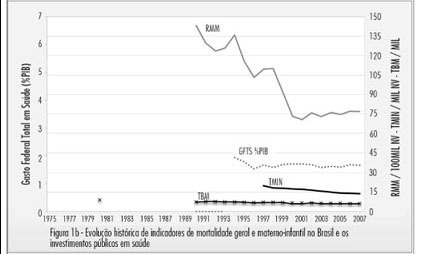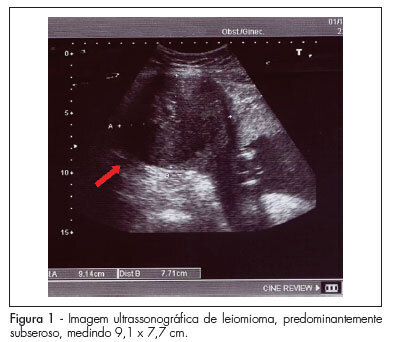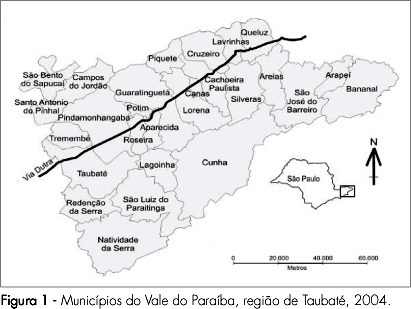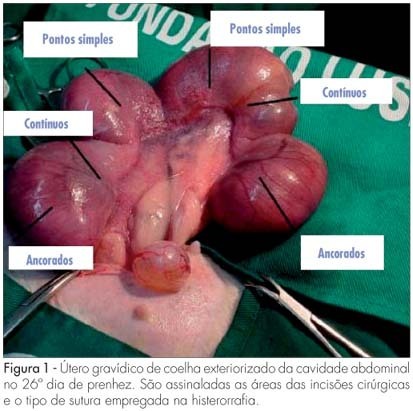Summary
Revista Brasileira de Ginecologia e Obstetrícia. 2011;33(9):234-239
DOI 10.1590/S0100-72032011000900003
PURPOSE: To analyze comparatively the conditions of birth in Portugal and Brazil from 1975 to 2007. METHODS: Indicators of maternal and child health: rates of maternal death and neonatal mortality, cesarean rate and public spending on health were retrospectively collected from electronic databases of health information from the Unified Health System (DATASUS) and the National Institute of Statistics of Portugal (INE), among others. Their values were descriptively analyzed in terms of trends and the temporal sanitary scenarios were presented and discussed, comparing, when possible, the information from the two countries. RESULTS: Births in Portugal were characterized by lower maternal mortality (12.2x76.2/100.000) and neonatal mortality (2.2x14.6/1000), compared to Brazil, considering the average of the years from 2004 to 2007. The history of the conquest of maternal and child indicators of excellence in Portugal involved a phase that paralleled the significant socio-economic improvements and the increasing contribution of public health, followed by another from the 1990s, involving better equipped health care units. In Brazil, rates of maternal and neonatal mortality are declining, but satisfactory values have not yet been achieved. The historical difference in the amount of social spending on health, both in current and historical values, was a crucial difference between countries. Despite the disparities in maternal and neonatal outcomes, cesarean section rates were equally ascendant (34.5% in Portugal and 45.5% in Brazil), considering the average for the period from 2004 to 2007. CONCLUSION: The indicators of maternal and neonatal death in Portugal and Brazil have aligned themselves to social, economic and contributions of public investments in health. The increasing rates of caesarean section do not explain the discrepancies in maternal and neonatal outcome between countries.

Summary
Revista Brasileira de Ginecologia e Obstetrícia. 2011;33(5):252-262
DOI 10.1590/S0100-72032011000500008
Brazil is among the countries with the highest cesarean section rates, especially in the supplementary health sector. However, some characteristics are similar in both the public and private sectors in terms of the wishes and expectations of pregnant women regarding their delivery. There is a preference for vaginal delivery among women of all social, economic, and cultural levels, a fact that shifts the focus of the negative influence of this variable from women to other subjects involved in delivery care. No isolated factor is able to justify the complexity of making a decision for cesarean section, but the physician and the type of hospital are the main associated factors. The several harmful effects of a non-judicious performance of cesarean section are scientifically recognized. It is important to raise the awareness of doctors and of other health professionals about the real consequences of this decision, the ethical deviations when conducts are chosen without exclusively focusing on the patient`s health, and the need for constant updating for the management of the various possible conditions of childbirth.

Summary
Revista Brasileira de Ginecologia e Obstetrícia. 2010;32(4):198-201
DOI 10.1590/S0100-72032010000400008
Uterine leiomyomas are characterized as a benign disease and are observed in 2 to 3% of all normal pregnancies. Out of these, about 10% may present complications during pregnancy. We present a case of a pregnant patient sought emergency obstetric care at the 17th week, complaining of severe pain, presenting with painful abdominal palpation and sudden positive decompression. Ultrasonography revealed a myoma nodule measuring 9.1 x 7.7 cm; the patient was hospitalized and medicated, being also submitted to laparotomy and myomectomy due to worsening of her condition. Prenatal care revealed no further abnormalities, with resolution of gestation at 39 weeks. The newborn weighed 3,315 g, with Apgar scores of 9 and 10. In such cases, clinical treatment should always be attempted and surgery should be considered only in selected cases, mainly in the impossibility of conservative treatment or when the patient's clinical features require immediate intervention. In this case, myomectomy was effective against maternal-fetal obstetric complications.

Summary
Revista Brasileira de Ginecologia e Obstetrícia. 2010;32(4):169-175
DOI 10.1590/S0100-72032010000400004
PURPOSE: to determine the factors associated with cesarean section in pregnancies with fetal death at a maternity hospital in Recife, Pernambuco, Brazil. METHODS: a cross-sectional study was performed, which analyzed data from the information system about mortality and medical records, from January 2005 to December 2008, of Hospital Barão de Lucena (HBL). We analyzed women with fetal death diagnosis, with gestational age of 20 weeks or more, in terms of sociodemographic characteristics, causes and types of fetal death, obstetrical precedents and birth characteristics. The associations between the variables were analyzed by the χ2 test of association and Fisher exact test, with the level of significance set at 5%. We calculated the prevalence ratio as the measure of risk and the confidence interval (CI) at 95%. Logistic regression analysis was also performed and the Odds Ratio (OR) was calculated. RESULTS: among the 258 pregnant women with fetal death, 27.5% (n=71) underwent cesarean section. After multivariate analysis, the factors that remained significantly associated with cesarean section were maternal age below 20 years (OR=0.23; 95%CI=0.06-0.85), history of one or more cesarean sections (OR=7.02; 95%CI=2.29-21.55), multiple gestation (OR=9.06; 95%CI=2.01-40.71), use of misoprostol for birth induction (OR=0.07; 95%CI=0.01-0.32), fetal death occurring during birth (OR=4.01; 95%CI=1.13-14.24), low birth weight (OR=0.33; 95%CI=0.11-0.94), presence of hypertensive disorders (OR=3.7; 95%CI=1.46-9.39) and abruptio placentae (OR=13.9; 95%CI=4.67-41.69). CONCLUSION: in HBL, the risk factors for cesarean section in pregnancies with fetal death were previous cesarean section, multiple gestation, intrapartum deaths, hypertensive disorders and abruptio placentae. The protective factors were teenage pregnancy, use of misoprostol and low birth weight.
Summary
Revista Brasileira de Ginecologia e Obstetrícia. 2009;31(6):279-284
DOI 10.1590/S0100-72032009000600003
PURPOSE: to evaluate the effect of delivery type and usual obstetric procedures on the neurologic condition of a sample of consecutive term and healthy neonates, in the first 48 hours of life, using the Neurologic Adaptative Capacity Score (NACS) system. METHODS: cohort prospective study with 313 neonates, from a neonatology unit: Unidade de Neonatologia e Alojamento Conjunto. The variables analyzed were obstetric variables; clinical outcome: low neurologic vigor phase, evaluated by NACS, at 4, 24 and 48 hours of life. The data have been assessed twice: once with the whole sample and the other comparing the Vigorous Group, whose neonates kept a score of 35 or more during the three evaluations, and the Low Vigor Group, with less than 35 scores during the three consecutive evaluations. Bivariate and multivariate analyses have been done. Possible associations between low neurologic vigor phase and the type of delivery, as well between the low neurologic vigor phase and obstetric variables have been searched. RESULTS: in the bivariate analysis, the delivery type and the obstetric variables were not associated with the low neurologic vigor phase. Nevertheless, the association between the amniotic fluid and the low neurologic vigor phase reached values very close to significance and, then, it was included in the multivariate analysis. In the multivariate analysis, the only variable associated with low neurologic vigor was the presence of meconium stained amniotic fluid, which has shown to be 8.1 times more risky for the neurologic scoring, when Vigorous Group and Low Vigor Group were compared. In the analysis of the whole sample, the same risk was 1.7. CONCLUSIONS: neither the delivery type, nor the usual obstetric procedures were associated with low neurologic vigor phase. This is useful information, clinically or legally speaking, mainly for obstetricians. According to this sample data, when the term neonate is healthy, the delivery type and the usual obstetric procedures have no impact in the neurologic condition.
Summary
Revista Brasileira de Ginecologia e Obstetrícia. 2009;31(4):171-176
DOI 10.1590/S0100-72032009000400003
PURPOSE: to apply geoprocessing techniques for the spatial birth profile analysis of each municipality. METHODS: ecological and exploratory study, using data from the Health Information System about born alive babies in 2004, and using geoprocessing techniques. The spatial autocorrelations of the variables: cesarean section, mother's schooling, low birth weight, Apgar score at five minutes, prematurity, number of medical appointments and adolescent mothers, besides the map with the index of human development were estimated. For the detection of spatial events aggregates, Moran's I M statistics, through the program Terra View 3.13 (developed by INPE and available to the public) was used. Spatial maps with those variables were built, and Pearson's correlation coefficients, estimated. RESULTS: results have shown that the rate of born alive babies, from mothers with school level over primary school and from cesarean sections, presented a spatial pattern visually identifiable and significant spatial self-correlation. Low birth weight, prematurity, Apgar score, number of pre-natal appointments and adolescent mothers have presented a random spatial pattern, showing that, in this analysis scale, those markers have not discriminated the risk groups, despite their unquestionable predictive value for children's morbidity-mortality at individual level. There has been a positive correlation between cesarean section and schooling, and between cesarean section and human development index; and a negative correlation between adolescent mothers and human development index, with statistical significance (p<0.05). CONCLUSIONS: this methodology has allowed us to identify spatial clusters for the variables cesarean section and mother's schooling, besides deepening our knowledge on birth profile in the municipalities, presenting good potential on how to direct actions for specific areas.

Summary
Revista Brasileira de Ginecologia e Obstetrícia. 2008;30(10):518-523
DOI 10.1590/S0100-72032008001000007
Ectopic pregnancy in a cesarean scar is the rarest form of ectopic pregnancy and probably the most dangerous one because of the risk of uterine rupture and massive hemorrhage. This condition must be distinguished from cervical pregnancy and spontaneous abortion in progress, so that the appropriate treatment can be immediately offered. Since the advent of endovaginal ultrasonography, ectopic pregnancy in a cesarean scar can be diagnosed early in pregnancy if the sonographer is familiarized with the diagnostic criteria of this situation, especially in women with previous cesarean scar. Here we describe a case of ectopic pregnancy in a cesarean scar in which the diagnosis was considerably late, with presentation of spontaneous regression.

Summary
Revista Brasileira de Ginecologia e Obstetrícia. 2007;29(12):633-638
DOI 10.1590/S0100-72032007001200006
PURPOSE: to compare macro and microscopically, surgical uterine sutures in female rabbits, after caesarean section utilizing separate, continuous and continuous anchored suture stitches. METHODS: three New Zealand female rabbits in their first pregnancy were used. The caesarean section was carried out at the 26th day of gestation and three incisions were performed in each uterus. The hysterorrhaphy was performed with a 00 Vicryl® thread, and a different suture technique was employed for each incision. Total hysterectomy and adnexectomy were done at the 60th day post-delivery with the preservation of eventual adhesions for the evaluation of the surgical scars. The extent of scar retraction, amount of fibrin deposit and the suture integrity were evaluated through macroscopy. For the evaluation through microscopy, hematoxylin eosin technique was used for cellular colorimetry, and Masson's trichrom to evidence collagen. The statistical non-parametric Friedman's test was employed for the matching hypothesis, and Fisher's exact test to verify the homogeneity of the techniques (level of significance: 5%). RESULTS: a total of 18 scars were obtained (six scars per suture). The following mean values were obtained for the longitudinal (0.5/0.4/0.5, p=0.069) and transversal retraction degrees (0.3/0.4/0.3, p=0.143) respectively for separate, continuous and continuous anchored suture techniques. All sutures presented regular fibrin deposit, no adhesions and integral absorption of the stitches. The mean value of the blood vessels (158.5/139.3/172.1; p=0.293), fibroblasts (351.6/345.8/354.3; p=0.311) and of collagen percentage (44.0/45.5/48.5; p=0.422) were calculated through microscopy, respectively for separate, continuous and continuous anchored suture techniques. CONCLUSIONS: the type of hysterorrhaphy technique of caesarean section in female rabbits did not generate any significant statistical difference in the macroscopic and microscopic parameters evaluated.
